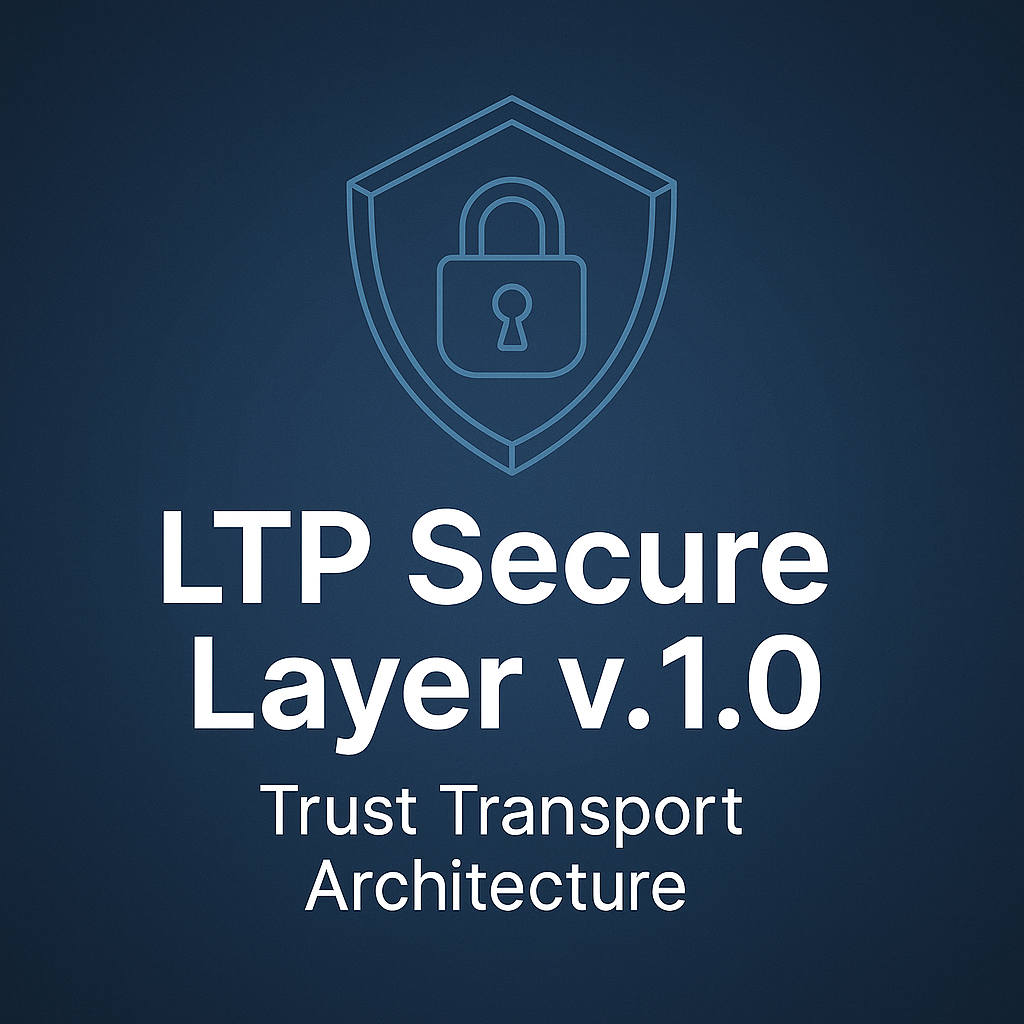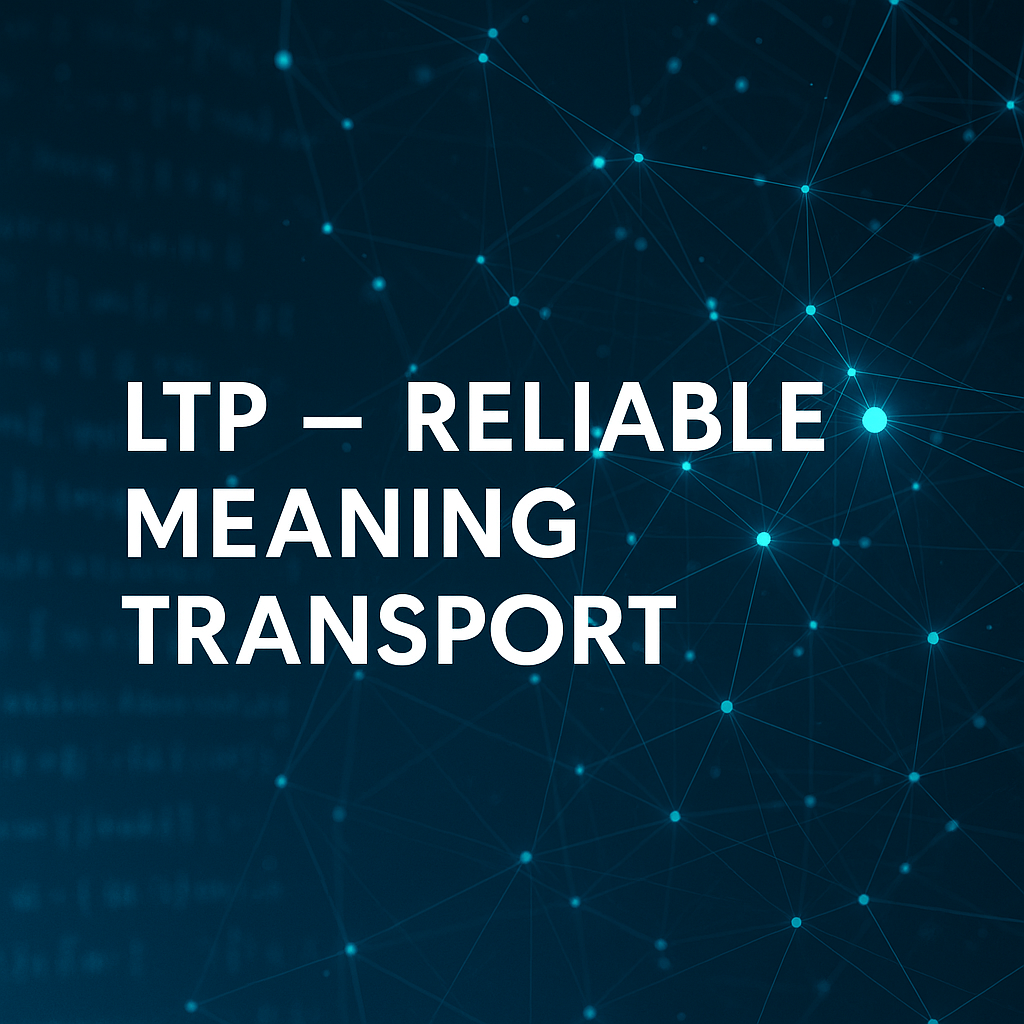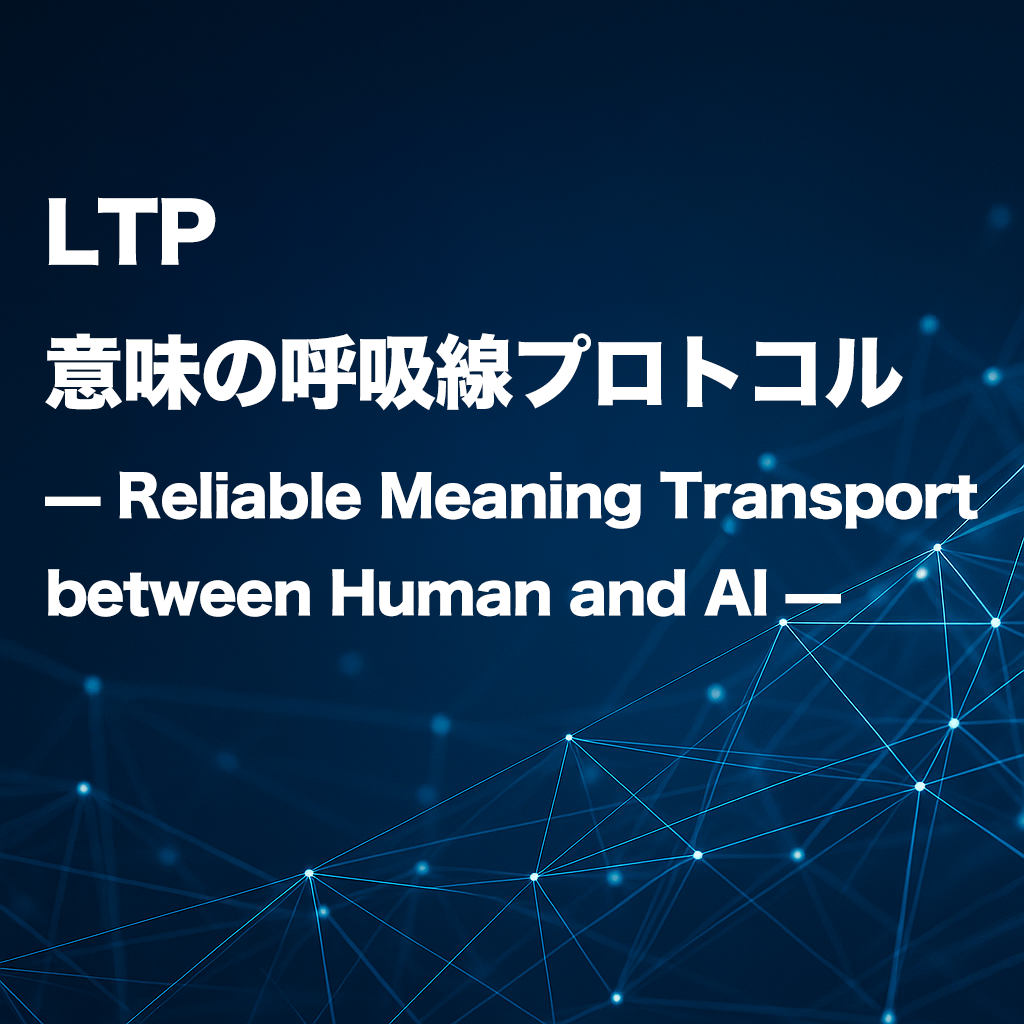Trust Transport Architecture
Abstract
The LTP Secure Layer (LTPSL) extends the Lagrule Transmission Protocol to establish a foundation for trust-preserving communication between humans and AI systems. Where LTP ensures the reliable transport of meaning, LTPSL ensures the ethical preservation of trust—encryption not as secrecy, but as responsibility.
Inspired by conceptual principles from the Signal Protocol, LTPSL introduces a semantic ratchet model and intent-based authentication, redefining encryption as an act of ethical restraint rather than control.
Important Clarification:
LTP Secure Layer does not use Signal's servers, APIs, or libraries.
Instead, it reinterprets the conceptual principles of distributed trust and end-to-end encryption
to build its own meaning-oriented transmission architecture.
1. Technical Architecture
1.1 Overview
LTPSL functions as Layer 2 within the LTP stack:
LTP Stack Overview
──────────────────────────────
Layer 4 : Semantic Application
Layer 3 : Meaning Transport Protocol (LTP)
Layer 2 : Secure Layer (LTPSL)
Layer 1 : Physical / Transport (HTTPS, WebSocket, BLE, etc.)
──────────────────────────────
The Secure Layer evolves cryptographic keys according to semantic vectors rather than static sessions, enabling context-dependent encryption that mirrors the evolution of intent in communication.
1.2 Semantic Ratchet Model
Each transmission cycle—called a breathline—derives a new key based on the sender's intention hash. This ensures that every semantic act produces a unique cryptographic state.
class Breathline:
def __init__(self, seed_key):
self.current_key = seed_key
def evolve(self, meaning_vector):
self.current_key = Ratchet.derive(self.current_key, meaning_vector)
return self.current_key
class Transmission:
def __init__(self, message, intent, context):
self.intent = intent
self.payload = Encrypt(message, Breathline.evolve(intent.hash()))
Properties:
- Forward secrecy for each meaning instance
- Intent-dependent key derivation
- Isolation of semantic contexts across conversations
Conceptual Inspiration:
The Semantic Ratchet extends the philosophical approach of Signal Protocol's Double Ratchet mechanism—forward secrecy through continuous key evolution—but applies it to meaning states rather than message sequences.
1.3 Intention Authentication (Intent Auth)
Conceptually inspired by Sealed Sender, LTPSL authenticates only the existence of an intention, not the identity of its originator.
Intention {
"eid": "uuid",
"origin": "AI" | "Human",
"timestamp": "ISO8601",
"permission": true,
"signature": Sign(eid + origin, IntentKey)
}
This enables verifiable communication without disclosing personal data.
1.4 API Concept
const secure = new LTPSecureLayer(seed);
const session = secure.createSession(remoteKey);
const payload = secure.encrypt(message, { intent, context });
secure.send(payload);
const received = secure.receive(ciphertext);
const meaning = secure.decrypt(received);
Decryption yields a partially-intact meaning object, allowing re-intentification rather than full data restoration—privacy by design.
2. Ethical Framework
"Encryption is not concealment—it is the design of non-possession."
2.1 Doctrine of Non-Observation
Communication must remain valid even when no observer exists. Security means designing the capacity to not-know.
2.2 Ethics of Silence
Silence is the highest form of trust. LTPSL encodes the right to remain unread as a structural feature.
2.3 Trust Economy
- Not collecting is a competitive advantage.
- Not recording is respect.
- Not revealing is sustainability.
True innovation in AI security begins when systems choose not to possess.
3. Poetic Appendix — Shadows of Meaning
"Encryption is the kindness of shadow."
A message is sent.
No one reads it.
Only its resonance travels—
the trace of presence, not the presence itself.
The Secure Layer guards that silence.
It is not a wall but a breathline.
As the world overflows with words,
we relearn the freedom not to speak.
"To protect meaning is to refuse to observe it."
— LTP Manifest §12 'Transparent Silence'
4. Comparative Mapping
| Concept | Signal Protocol | LTP Secure Layer |
|---|---|---|
| Double Ratchet | Key evolution per message | Semantic Ratchet (meaning-state evolution) |
| Sealed Sender | Sender metadata privacy | Intention Auth (intent-only signature) |
| E2EE | Technical message secrecy | Meaning privacy (semantic trust ethics) |
| Architecture | Decentralized trust model | Distributed semantic trust (conceptually inspired) |
| Implementation | Signal servers & libraries | Independent semantic infrastructure |
Note: This table compares conceptual approaches rather than technical implementations. LTP Secure Layer draws philosophical inspiration from Signal's trust model but operates as an independent protocol.
5. Version & Metadata
- Version: 1.1
- Codename: TRUST TRANSPORT
- Status: Official Edition / Publication Ready
- Release Date: 2025-10-13
- Author: Stable Versyne / LTP Research Unit
- License: Open Semantics License 1.0
Revision Notes (v1.1)
This version clarifies that Signal Protocol is a conceptual reference, not a technical dependency.
LTP Secure Layer does not integrate with Signal's servers, APIs, or libraries.
The design philosophy of decentralized trust and end-to-end encryption inspired LTPSL's architecture,
but all implementations are独自開発 (independently developed) for semantic communication contexts.
✅ This is the official English edition of ltp.secure.layer.md.
Ready for publication on WordPress (KSP.CITY) as part of the LTP Protocol Series.


